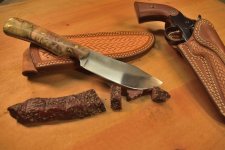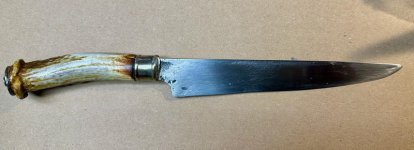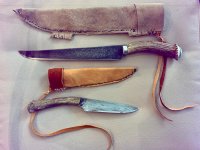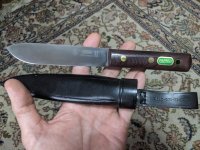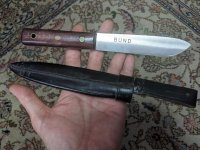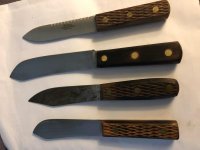Glenn R. McMannly
Member
Not many these days know this, but the average mountain man did not carry a fancy Bowie. He was more likely to carry what we would now refer to as a simple kitchen knife. A butcher:

These knives were traded widely and sold all over the frontier. Great for processing meats and hides, and emergency self defense.
This example is made by John Nowill & Sons out of Sheffield, England. It is a very keen blade and I enjoy it greatly. I carry it when shooting my flintlock northwest trade musket.
God bless.
Glenn

These knives were traded widely and sold all over the frontier. Great for processing meats and hides, and emergency self defense.
This example is made by John Nowill & Sons out of Sheffield, England. It is a very keen blade and I enjoy it greatly. I carry it when shooting my flintlock northwest trade musket.
God bless.
Glenn

